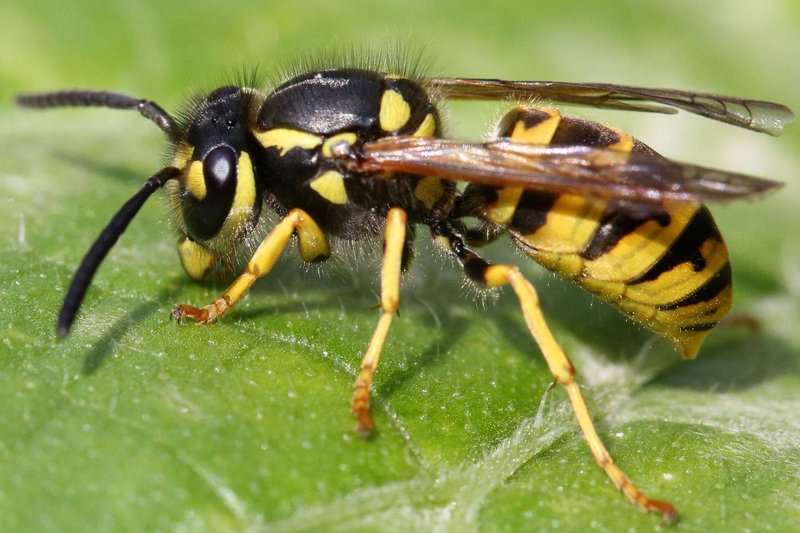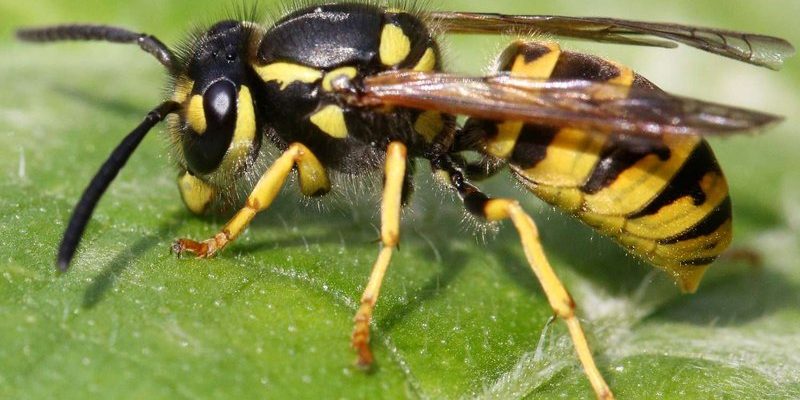
So, let’s dive into the world of yellowjackets. Picture a bustling city where everyone is busy working, but there are a few lurking dangers in the shadows. That’s essentially what life is like for yellowjackets. They face a variety of threats, from larger animals to environmental challenges. Understanding these threats isn’t just for the curious; it helps us appreciate these creatures more and see how they fit into the larger picture of the ecosystem. Ready to explore?
Understanding the Yellowjacket’s Role in the Ecosystem
Yellowjackets are more than just pests; they play an essential role in their habitats as both predators and scavengers. They help control insect populations by feeding on aphids, caterpillars, and other small pests. This predatory behavior is vital for maintaining balance in gardens and agricultural areas.
Additionally, yellowjackets are scavengers, helping to break down organic matter. They feast on decaying fruits, dead insects, and even meat. This not only helps keep the environment clean but also enriches the soil with nutrients. You could say that yellowjackets are nature’s clean-up crew, working tirelessly behind the scenes. It’s pretty impressive, right?
However, this versatility also makes them a target for various predators. With their role in the food chain, they become part of a larger narrative involving survival and adaptation. Let me explain who—or what—wants a piece of these buzzing creatures.
Birds: Aerial Assassins
Birds are one of the primary predators of yellowjackets. Many species, including mockingbirds and blue jays, actively hunt wasps. The aerial agility of these birds gives them a significant advantage, allowing them to swoop in and grab unsuspecting yellowjackets mid-flight.
But it’s not just any bird that takes on this challenge. Larger birds with the stamina and skills to maneuver quickly in the air are more successful at hunting yellowjackets. Some birds even have developed a taste for them, making them a regular part of their diet. Honestly, it’s a fascinating example of nature’s predator-prey dynamics.
You might be wondering how yellowjackets protect themselves from these feathered foes. Well, they rely on their speed and agility, often darting in and out of their nests or dense foliage to escape the hunt. However, when nests are disturbed, they can become aggressive defenders.
Mammals: Ground-Level Threats
While birds are a sky-high danger, mammals also have their eyes on yellowjackets. Animals like raccoons, bears, and even some rodents are known to raid yellowjacket nests. Bears, for instance, are infamous for their ability to tear apart a yellowjacket nest in search of larvae and adults to munch on.
This confrontational relationship is a double-edged sword. While yellowjackets contribute to the ecosystem, they also face significant threats from these hungry mammals. Interestingly, the nests aren’t always a guaranteed meal; the yellowjackets will fiercely defend their homes against intruders. It’s a battle of wits and instincts, where the stakes are high for both sides.
In the case of raccoons, these clever creatures will often be seen wearing a mask as if they’re part of a heist movie, stealthily investigating nests when they think the coast is clear. But the yellowjackets don’t take kindly to uninvited guests, making for some intense encounters.
Insects: The Competition
You might think yellowjackets are on top of their game, but they have competitors in the insect world that also threaten their survival. Other wasp species, such as hornets, can invade yellowjacket nests, either to kill the occupants or to steal their food. This competition for resources can lead to some intense conflicts between these insect rivals.
What’s more, yellowjackets are also at risk from common predators like spiders and praying mantises. These stealthy hunters lie in wait, ready to ambush unwary yellowjackets. It’s a game of survival, where every insect must be vigilant or risk becoming someone’s lunch!
To fend off these threats, yellowjackets often rely on their sheer numbers. They work together, forming swarms to protect their nests and fend off potential invaders. It’s kind of like having a team of superheroes watching your back.
Environmental Challenges: A Hidden Enemy
Beyond physical predators, yellowjackets face various environmental threats. Changes in weather patterns, habitat destruction, and pesticide use can significantly affect their populations. For instance, extreme weather events can destroy nests or limit food sources, making it hard for yellowjackets to thrive.
Pesticides, in particular, pose a significant risk. While they’re designed to eliminate pests, these chemicals can disrupt the delicate balance of the ecosystem, often harming beneficial insects like yellowjackets in the process. It’s a harsh reality for creatures that help control other insect populations.
You might be thinking, “What can be done?” Well, being mindful of our use of pesticides and supporting natural habitats can help create environments where yellowjackets—and all insects—can flourish.
Human Interactions: A Double-Edged Sword
Humans can also be a threat to yellowjackets, whether it’s through intentional extermination or unintentional destruction of their nests. When people encounter yellowjackets, their immediate reaction is often fear or annoyance, leading them to spray pesticides or destroy nests. Unfortunately, this can further diminish yellowjacket populations and disrupt the ecosystem.
However, there’s a silver lining here. By understanding the important role yellowjackets play, we can learn to coexist with them more harmoniously. For example, educating ourselves about when and how to handle encounters with yellowjackets can reduce conflict. Instead of reacting in panic, we can choose to observe these fascinating creatures from a safe distance.
Let’s face it: the fear of getting stung often overshadows their benefits. But recognizing that they are essential to maintaining a balanced ecosystem can help shift our perceptions and promote a healthier coexistence.
In the intricate web of life, yellowjackets have their share of predators and threats, from birds and mammals to competing insects and environmental challenges. Each of these elements contributes to a delicate balance, where every creature has its place.
By understanding the threats yellowjackets face, we can appreciate their role even more. Instead of viewing them solely as pests, consider them as vital players in nature’s theater. The next time you see a yellowjacket buzzing around, remember: it’s just trying to do its part in the great circle of life.
So, let’s celebrate yellowjackets for their contributions, while also being mindful of the challenges they face. After all, the more we know, the better we can appreciate all the creatures that share our world.

